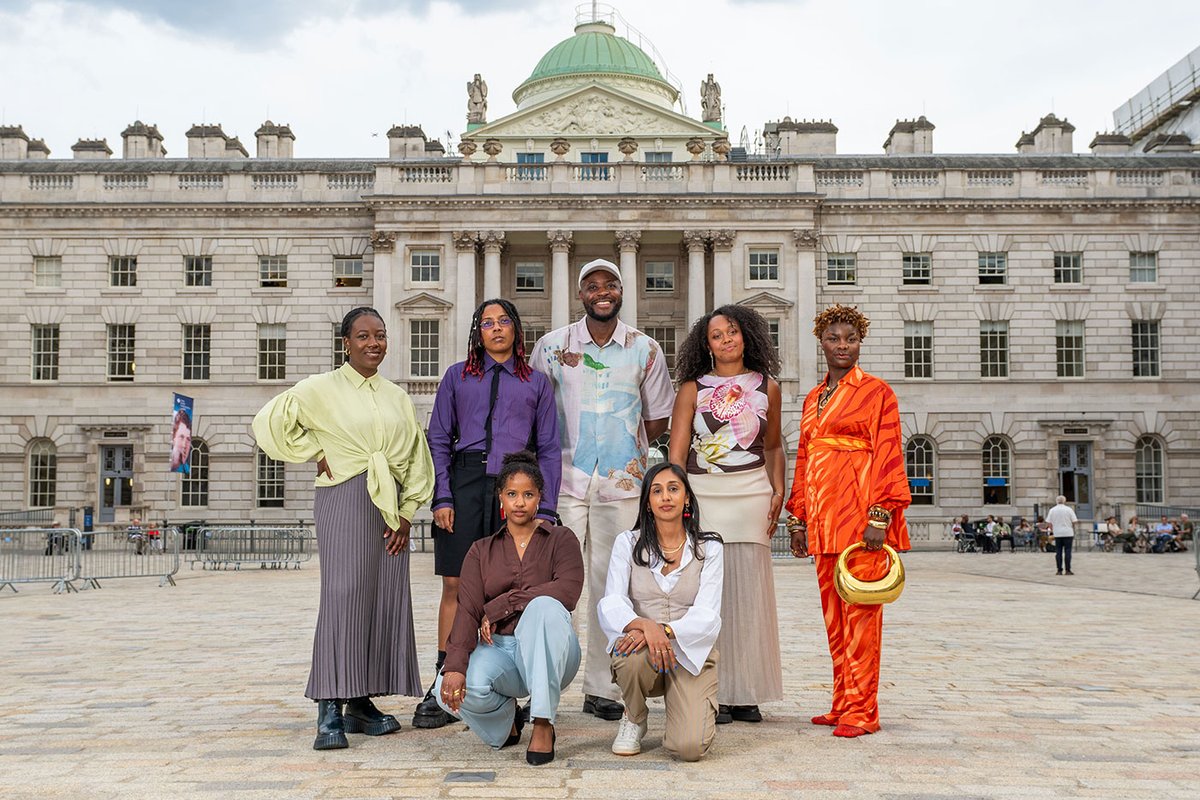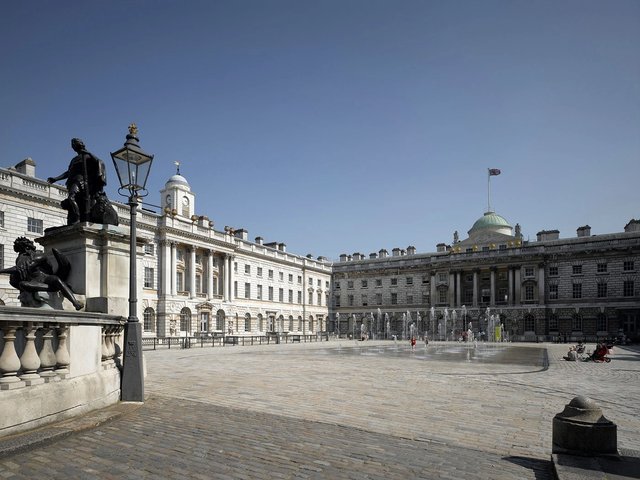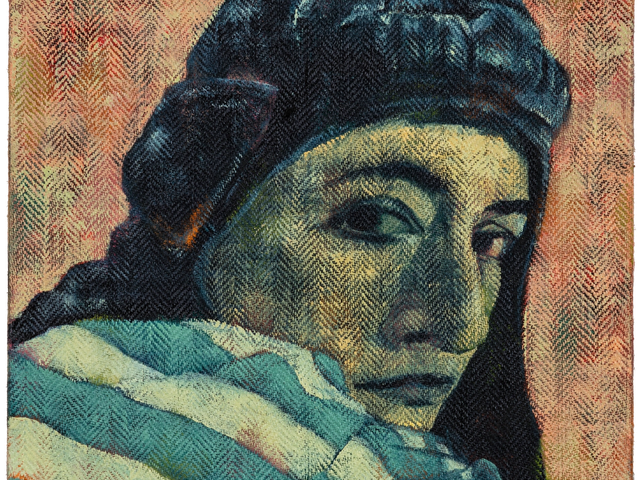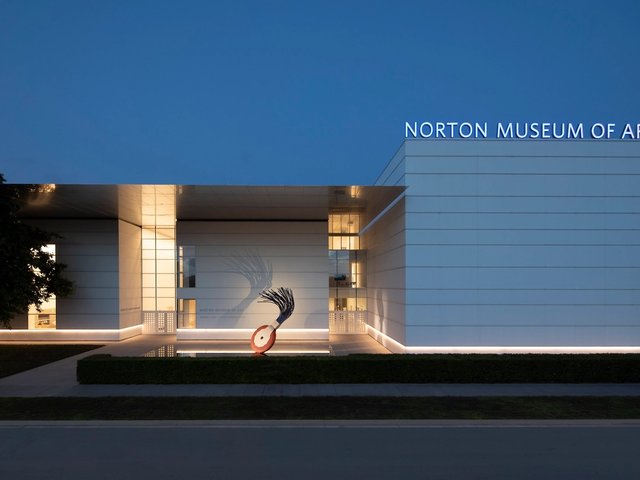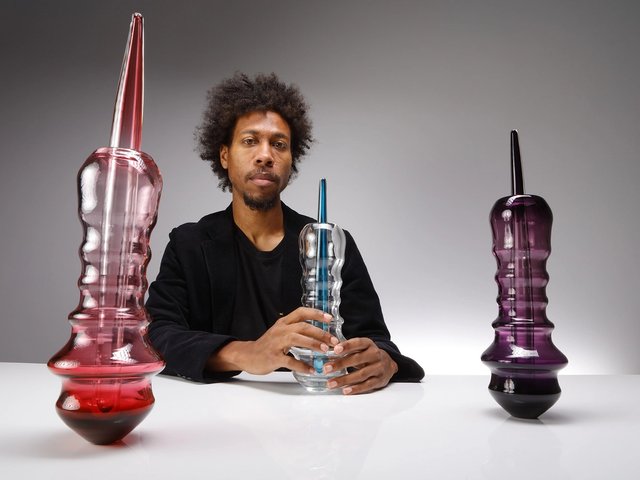In September, visitors to Somerset House, the central London centre for innovation and contemporary art, will be able to see an exhibition of work by the awardees of Talent 25. The scheme is designed to provide a spotlight for artistic innovators who have studios or office space in the Somerset House community and to support them in their professional development. The first five winners, announced in May, have been given bursaries to create new work in a programme mentored by the artist and designer Yinka Ilori.
The display of the winner's work will form part of Step Inside 25 Weekend—a free series of interactive events, on Saturday 13 and Sunday 14 September, to celebrate 25 years of Somerset House's public opening and to display the work of the artists who have studios in the building. The weekend will also open up some of the rarely seen corners of this massive, multi-level, 18th-century complex overlooking the river Thames.
The winners are Shanti Bell, an artist with a fashion background who creates experiential sculpture; Tyreis Holder, an artist devising new ways to work with textiles; enorê, an artist working with ceramics and on developing a 3D clay printer; Identity 2.0, a creative studio founded by Arda Awais & Savena Surana; and Piarvé Wetshi, the co-founder of Colèchi, a Black-owned research agency focused on sustainable development across the fashion industry.
For Ilori it is a huge honour to be asked to mentor the Talent 25 cohort. “I've got such a great relationship with Somerset House,” he tells The Art Newspaper. “We go way back. Six years ago I was commissioned to design Get Up Stand Up Now (2019), an exhibition around Black creatives. That was one of the biggest shows that [Somerset House had] worked on [and] my first exhibition design commission with my practice.”
“I know what it's like,” continues Ilori, who received backing from the Prince's Trust early in his career, “to be in the infancy of a practice...and having that support from someone who has been doing it for a number of years”. The artist says it was special to work on selecting the Talent 25 awardees because the diverse range of projects and ideas opened his eyes to what the future of art, design, fashion is going to be. “And I'm really excited for the future because it's in great hands,” he says.
What Ilori loves about Somerset House is, he says, “that you come into this incredible courtyard, to historic buildings [with] so much heritage and stories embedded within” and the place proves to be “the epicentre of collaboration and discovering new talent, discovering new ideas, where you're placed where you can push your curiosity”.
“Whenever I go there," he continues, “whether it's for dodgems or 1-54 [art fair]...I'm bound to find some form of collaboration. [It's] a place where magic can happen.”
The Talent 25 awardees come from the Somerset House community and are members of the various bodies and programmes the institution hosts for artists at the beginning of their careers. These include Somerset House Exchange (a pay-as-you-go co-working space with bursaries on offer), Somerset House Studios, Makerversity and the Black Business Residency (supported by the investment bank Morgan Stanley).
Ilori says he envisions some of the awardees and their work appearing at Craft Week, Frieze London, or the Venice Biennale in the future, and hopes that two things in particular will happen when the Talent 25 exhibition opens in September. He hopes that representatives of government come to Somerset House “to see the importance of supporting up-and-coming talent”; and that the show will also be seen by collectors and investors who can help take these artists’ work “to the next level”.
The awardees—each of whom has won a financial contribution of £8,000 to support the research and development of a new idea, as well as a personal development sum to use as they wish—spoke to The Art Newspaper.
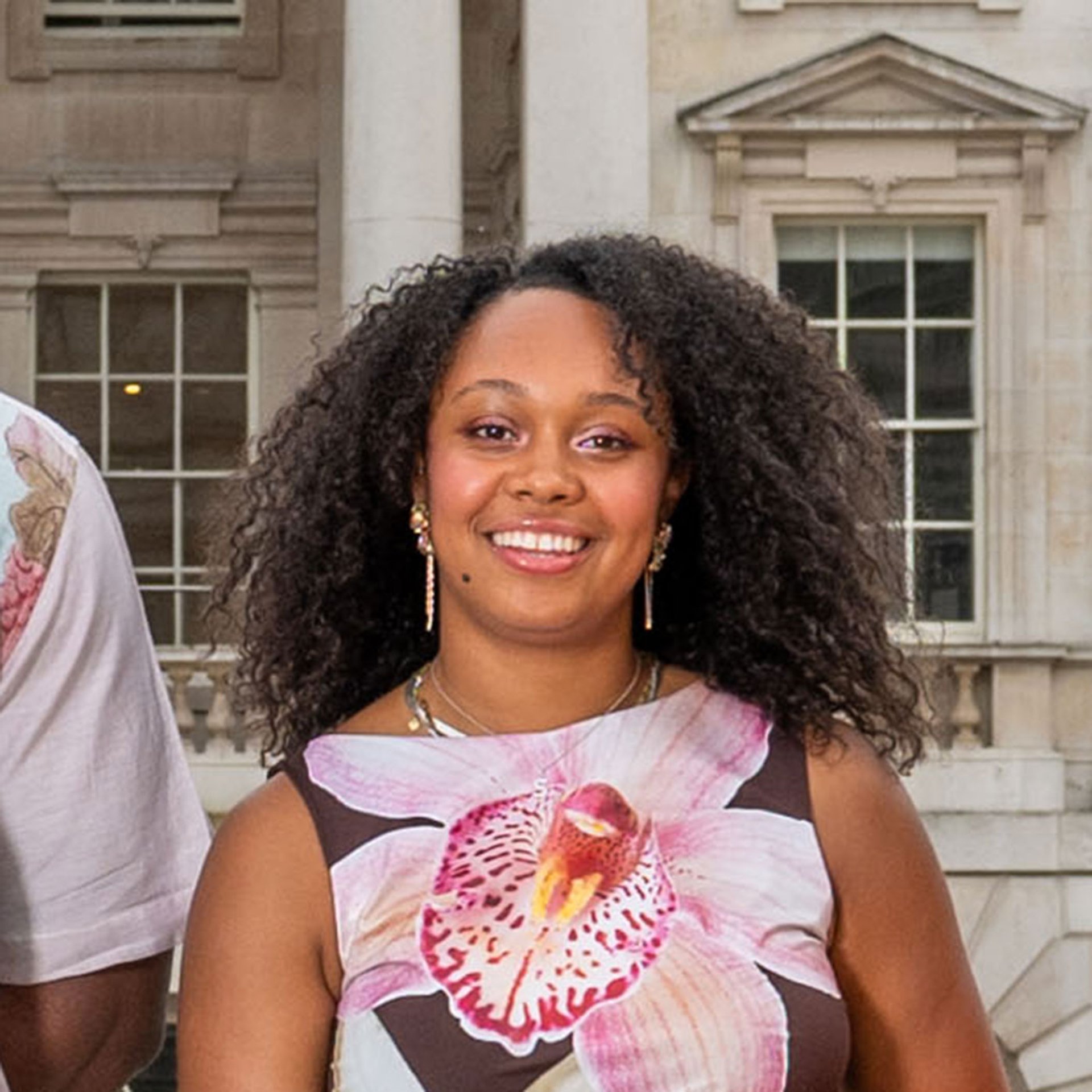
Shanti Bell: Somerset House, she says, is a space where "work can go beyond the boundaries ... you can think bigger" Photo: Jas Lehal/PA Media Assignments
Shanti Bell
Shanti Bell is an artist with a fashion background who creates sculpture, working largely in wood and fabric. At the Talent 25 Awards announcement in May, she described her practice as “an experiential sculpture that's immersive, interactive and wearable”. She has worked recently with the choreographer Wayne McGregor and The Royal Opera House, the fashion designer Bianca Saunders and the creative director, curator and stylist Harris Elliott.
Elliott, one of the co-curators of The Missing Thread: Untold Stories of Black British Fashion (2023-24), at Somerset House, asked Bell to create an outdoor installation for the opening of that exhibition. “I had never really worked on this scale before,” Bell said in May, “and I think to work at this size, it allowed me to realise my potential and to want to push the boundaries within my practice”. Somerset House, she said, is a space where “work can go beyond the boundaries...you can think bigger".
With her Talent 25 bursary, Bell is making a series of movement pieces that feature “tangible and wearable sculptures that will be communicated through live performance and film”. She is looking to see how she can “push the limits of static sculpture and the moving form, working collaboratively with dancers and choreographers to see this process of a physical exchange”.
“When I collaborate with dancers”, Bell tells The Art Newspaper, “I can give them a visual story. And then I'm hoping to work back and forth. Seeing how they move in the space will help me design the sculptures that I then create for them. As much as I've been designing the language and delving into the concept, I've also been thinking about the process and how I can collaborate with dancers in a way that feels organic for both of us.”
For her Talent 25 project she is making sculptures around the human body, as she normally does. "But this time,” she says, “I'm more thinking about how can a sculpture assist a body; or how could it restrict a body or how can it be intertwined with a body? So there is that blurring between sculpture and the human form.”
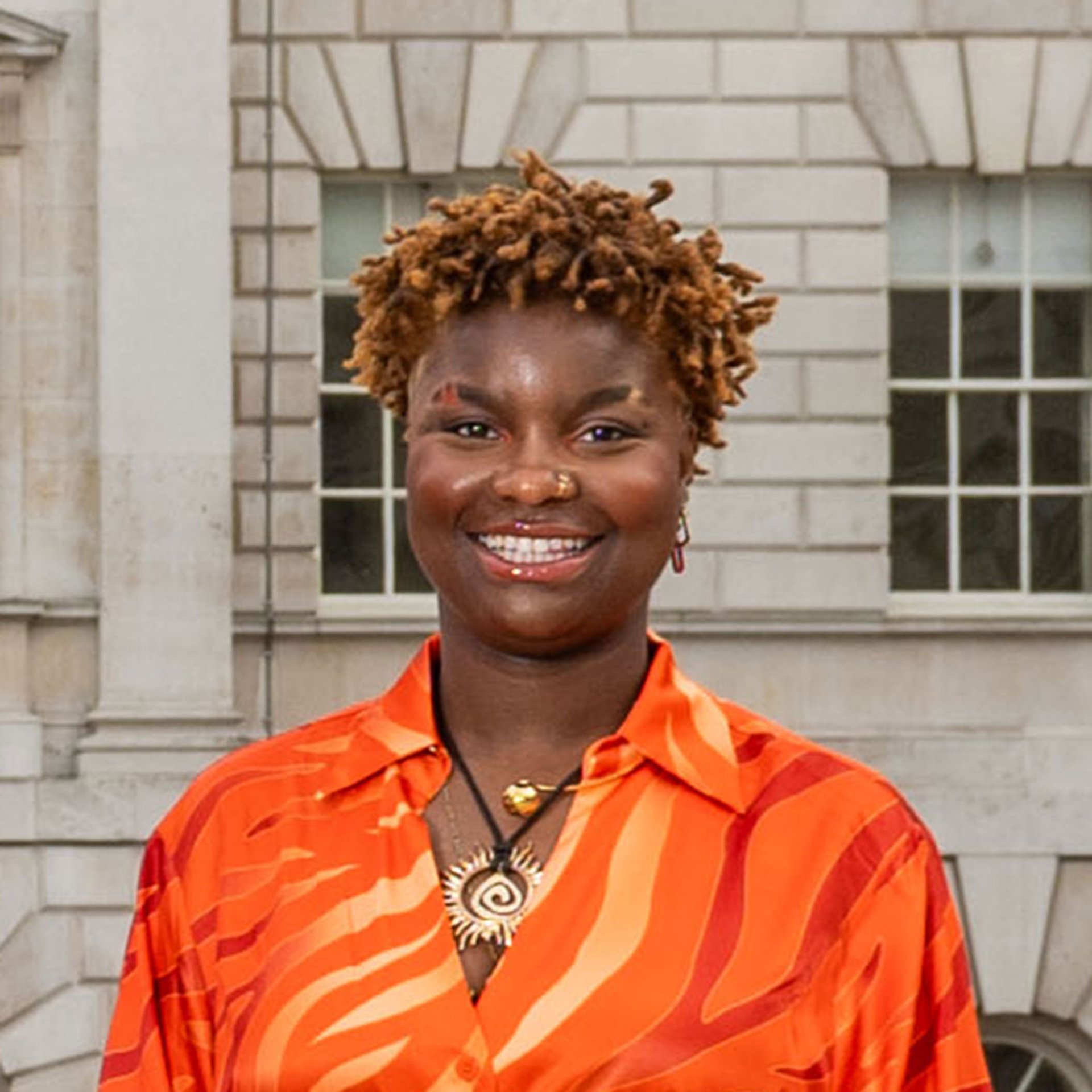
Tyreis Holder: the artist hopes that her Talent 25 project will spread education about the colonial history of the lightweight cotton fabric madras Photo: Jas Lehal/PA Media Assignments
Tyreis Holder
Tyreis Holder is an artist and community arts practitioner from south London, based at Somerset House Studios. She is a member of the Caribbean diaspora with heritage from Jamaica and St Vincent and has built a textiles-based practice, based on the example set in the art of crochet by her mother and grandmother. Holder works with installation, textiles and performance and focuses on explorations of self, generational and ancestral healing, spirituality, and the relationship with the mind
With her Talent 25 bursary, Holder said at the awards announcement in May, she is interested in further embedding “the narrative of care and trauma recovery through textiles into my practice. I'm really thinking about it from the lens of what it means to be a Black British woman…what it means to be of Caribbean heritage”.
She is planning a research trip to the Caribbean, supported by the bursary, and is focusing her research on three materials in particular: copper, silk, and madras. The lightweight cotton fabric originates in south India, and was exported by the East India Company from the late 18th century onwards to British colonial territories in the Caribbean.
“I'm very interested in embedding my Caribbean heritage into my work, especially when I'm looking at healing, generationally, or ancestrally,” Holder tells The Art Newspaper. “Madras is very interesting…it is such a rich history [with] the way it made its way into the Caribbean….the way it has traversed and…become embedded in culture.”
For copper and silk, Holder’s interest lies in their material healing properties. Her mother wore copper bracelets to help with her rheumatoid arthritis. Holder is also concerned with that metal’s spiritual and antibacterial qualities and its connection to generating dopamine in the brain.
Silk’s significance for Holder is as a material that many Black women wrap around their heads as a form of protection. “I quite like the pull between these two different materials: copper [is] a softer metal, but it's still a metal. And then the silk, which is really delicate and really fine,” she says. The conversation those two materials have, Holder adds, “speaks to the experience of Black women”.
Since winning the bursary, Holder has been refining her weaving skills so as to make her own madras—experimenting with dyes for silk and for yarns, as she works on fabrics to show with her Talent 25 presentation. She had also been organising a Caribbean research trip in order to further her research into material culture and to interview others on their experience with madras and silk.
Holder hopes that presenting her Talent 25 project in September will both spread education about the history of madras and act as a call to healing.
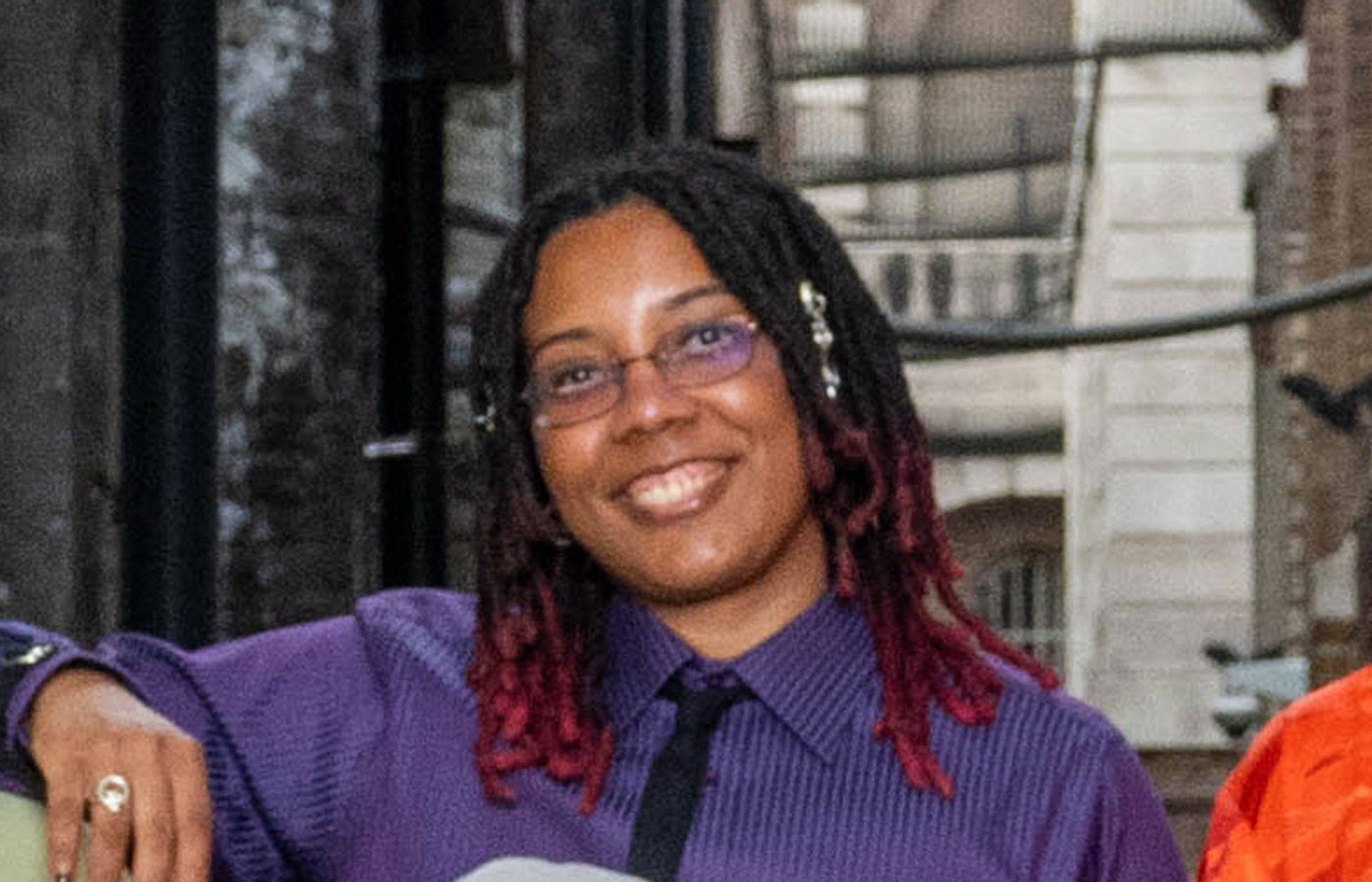
enorê: the ceramics artist loves the challenge of working with so many variables in creating with a 3D clay printer Photo: Jas Lehal/PA Media Assignments
enorê
enorêis a Brazilian multidisciplinary artist based in London and working with ceramics, who has been a member of Somerset House Studios for two years. They were awarded the Jerwood Somerset House Studios Residency, supported by the Jerwood Developing Artists Fund, and are using the Talent 25 bursary to develop a 3D clay printer. Their recent exhibitions include Poetics of Encryption at KW Institute for Contemporary Art (Berlin, 2024), Points of Return at Somerset House Studios (2024), and the PIPA Prize (Rio de Janeiro), where they were a 2024 prize awardee.
Working with clay, and 3D printing of the material, is exciting, enorê tells The Art Newspaper, because “clay is unpredictable”.
“I will model something digitally. And I don't know how it's going to come out of the printer because many different processes happen, so many different types of translation…Sometimes it comes from the way that the data is handled,” enorê says. “Sometimes it comes from the consistency of the clay, or sometimes it comes from just something specific [with] the printer, or [perhaps] my studio is a little bit too hot…I really like working with all of these different variables in my work.”
They started work with their Talent 25 bursary in June by reaching out to leading studios in the field of 3D ceramics. First they attended a course with the Barcelona studio Jet Clay and then met up with Unfold Studio, in Belgium, who have been making 3D ceramics since 2009 and are pioneers in modifying 3D printers of plastics to print clay. This process of discovery is a prelude to experimenting with clay of different density and “wetness”.
At the Talent 25 prize announcement in May, enorê explained that “everything I do is related to my own body”, using 3D scans and other digital data “to create reconfigured objects that I then print with clay in my studio”.
When people see the fruits of their bursary work on show in September, enorê hopes, they will come away “questioning the way we physically understand our relationships to digital data...and also our perception of ourselves”. They explain: “I digitise my own body and process it through different types of software. It would be interesting if people start questioning how we have this bodily relationship to data, to virtual spaces, to digital spaces.”
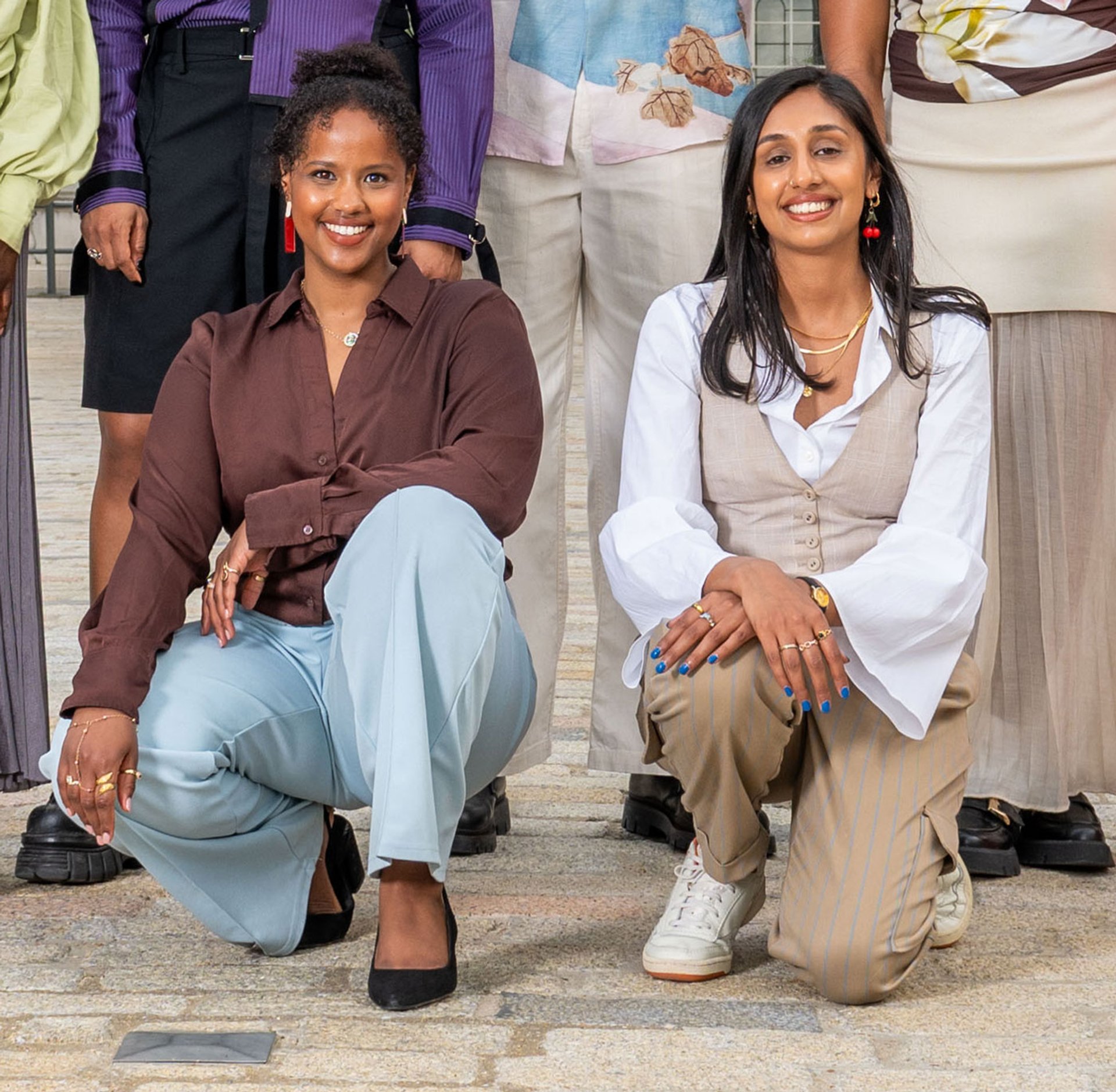
Arda Awais (left) and Savena Surana: co-founders of Identity 2.0, a creative studio imagining better digital futures Photo: Jas Lehal/PA Media Assignments
Identity 2.0—Arda Awais & Savena Surana
Identity 2.0, founded by Arda Awais and Savena Surana, both members of Somerset House Exchange, is a creative studio imagining better digital futures.
With their Talent 25 bursary, Awais and Surana, are putting on three events—two round tables of experts and one public event—to make the concept of digital identity and its preservation accessible to a broad audience.
The first round table, Awais tells The Art Newspaper, was “exploring the landscape of digital memories and digital legacy”. While the second was designed to look more at digital platforms. Following the public event, Sawais and Surana go “into curation mode", Awais says, “of trying to figure out…what can we actually make or build or prototype” for the Talent 25 awardees’ exhibition in September.
One of the concepts that Awais and Surana work with—and one that they are applying to their Talent 25 project—is that of “playful knowledge spaces”. In the studio’s work, Surana says, they have been part of educational systems and have developed “so many exciting experiments that we've been able to conduct around how knowledge and learning can be shared”, without the established educational hierarchies, “without such an emphasis on fixed outcomes”.
“And we've had such joy and we've found such pleasure,” Surana says, “in being able to produce those spaces where play and experiment and unfixed outcomes have been at the centre of it.” Even within the Talent 25 project, she says, “when we enter the space, we set ground rules of no one's knowledge is more important than others. We all have gaps in our knowledge that we all need to address as well. And so also just letting go of the ego when it comes to learning is really important to the playfulness that we bring.”
Being in this group of five winners, Awais says, has been a great opportunity to “find out about other people's practices that are just so different to ours” and which can spark inspiration. “I love the interdisciplinariness of this group” of Talent 25 awardees, Surana says. “We find inspiration in tech, but it's outside of this bubble, [the] tech bubble that we're in, that we look to to find inspiration…So it's really exciting to see what other people are going to get up to.”

Piarvé Wetshi: her collective Colèchi is using the Talent 25 bursary to make new kinds of sustainable knitted products Photo: Jas Lehal/PA Media Assignments
Piarvé Wetshi
Piarvé Wetshi, a member of Somerset House’s Black Business Residency, is the co-founder and editor-in-chief of Colèchi, a Black-owned collective and research agency dedicated to sustainable development across the fashion industry.
One of Colèchi’s most striking initiatives has been You Can Knit With Us, a knitting club designed to connect its members to the fashion industry. Run on a monthly basis since being launched at Tate Britain in January 2022, it has led to collaborations with other museums and galleries in addition to Somerset House.
Wetshi is running a project where Colèchi works directly with family-run alpaca farm in Somerset, in the west of England, to make sustainable knitted products. With the Talent 25 bursary, she tells The Art Newspaper, Colèchi is able to educate itself on machine knitting and manufacturing. The award has allowed them “to be more professional and to learn how to use machine knitting, but also how to design—and what the process is if you are to create a product with the local farm”. The plan, Wetshi says, “is to showcase an item at Somerset House in September that we produced in collaboration with them”.
The inspiration for the first collaborative piece with the farm was the Soil exhibition at Somerset House earlier this year. “I found the microscopic images of soil and microorganisms really fascinating,” Wetshi says, “and quite interesting in terms of shape.” In the weeks after winning the award, Wetshi and her colleagues worked with the knitting machine to see what structures they could reproduce.
In September they intend to show at Somerset House a final, costed up, product; one that explores what it means “if we work with our farmers here in the UK with the waste products that they have and the fibres that they have and what does this ecosystem look like”.
Winning the award has been very pleasing, Wetshi says, because Colèchi has been at Somerset House since the end of the pandemic. “When we joined, it was a really weird time because there [were] so many barriers as to how you could connect with people. And it has felt like Somerset House has been a huge part of our journey of reconnecting: not only with our audience— because we produce events at Somerset House—but also [as a] part of a massive ecosystem of creatives.”
Winning the award, she says, is “reflective of how much we've grown…because of Somerset House existing and creating the types of programmes and opportunities that it does”.


